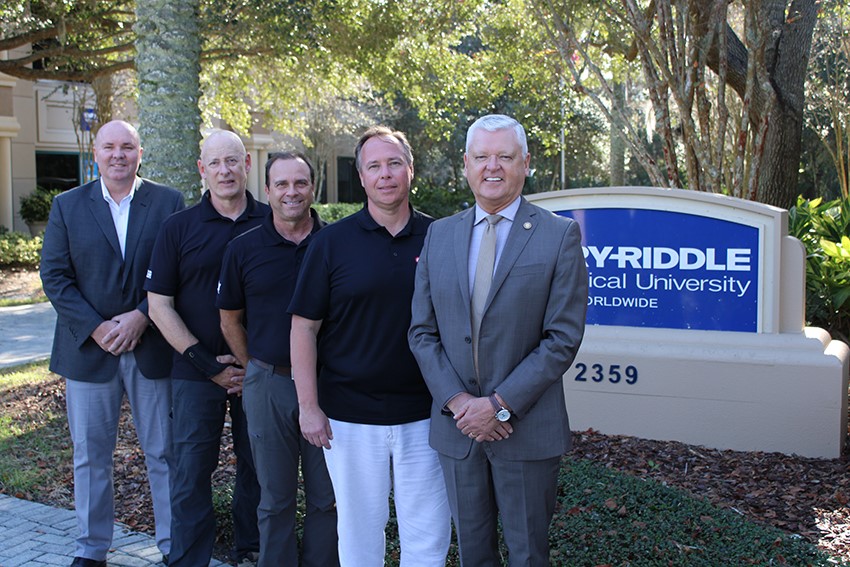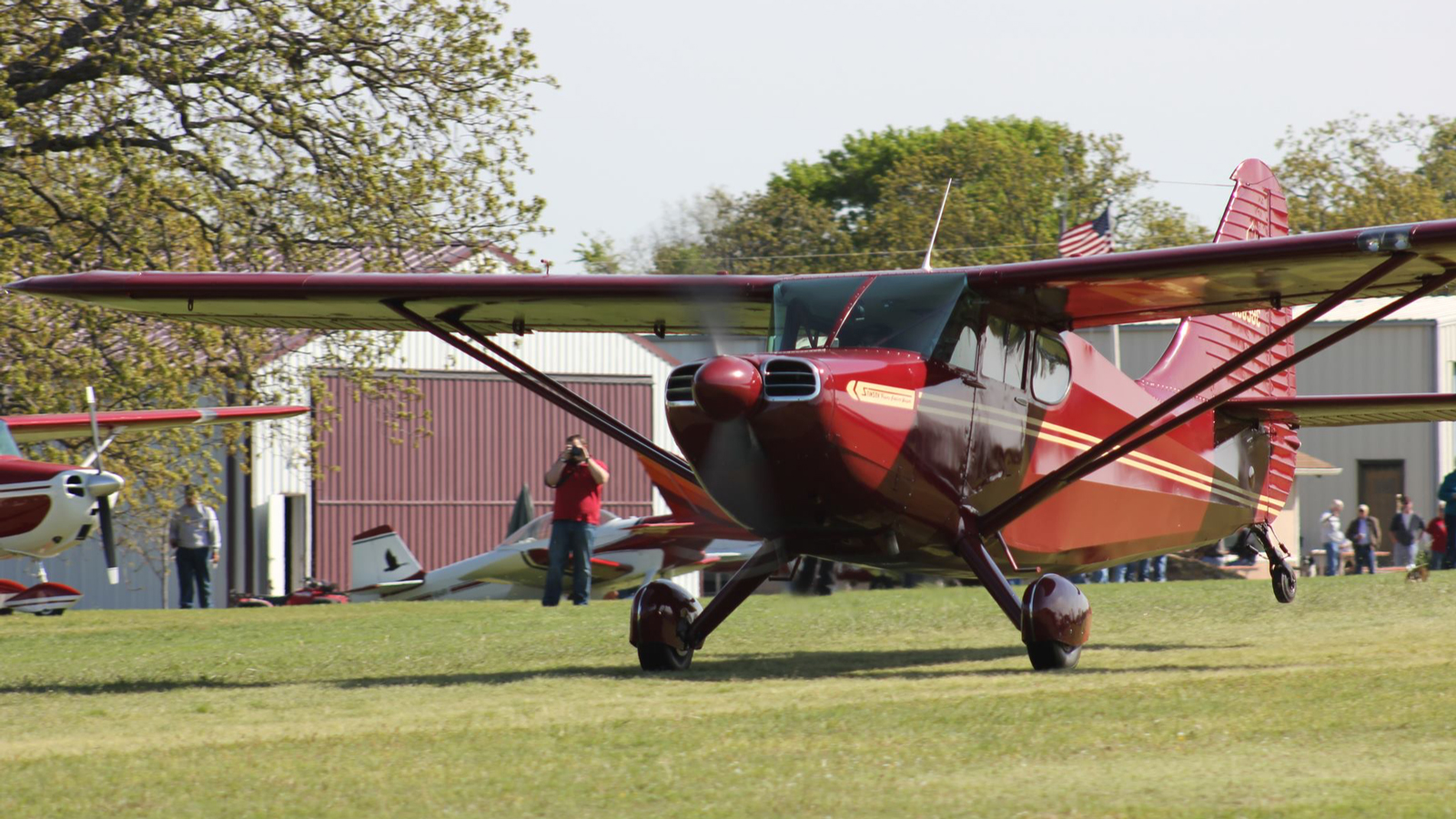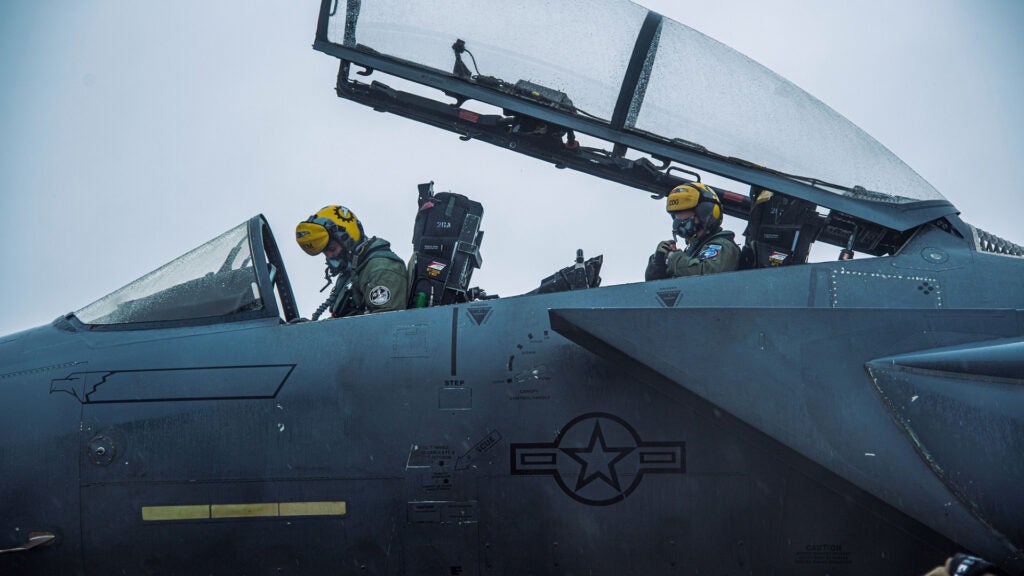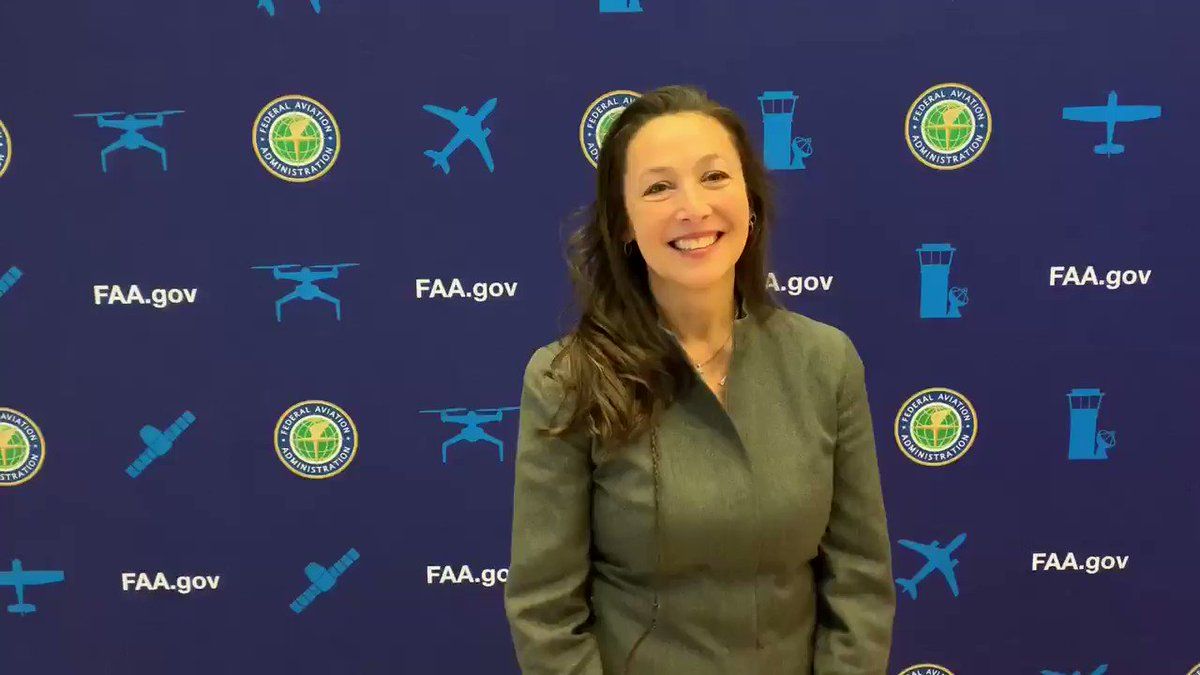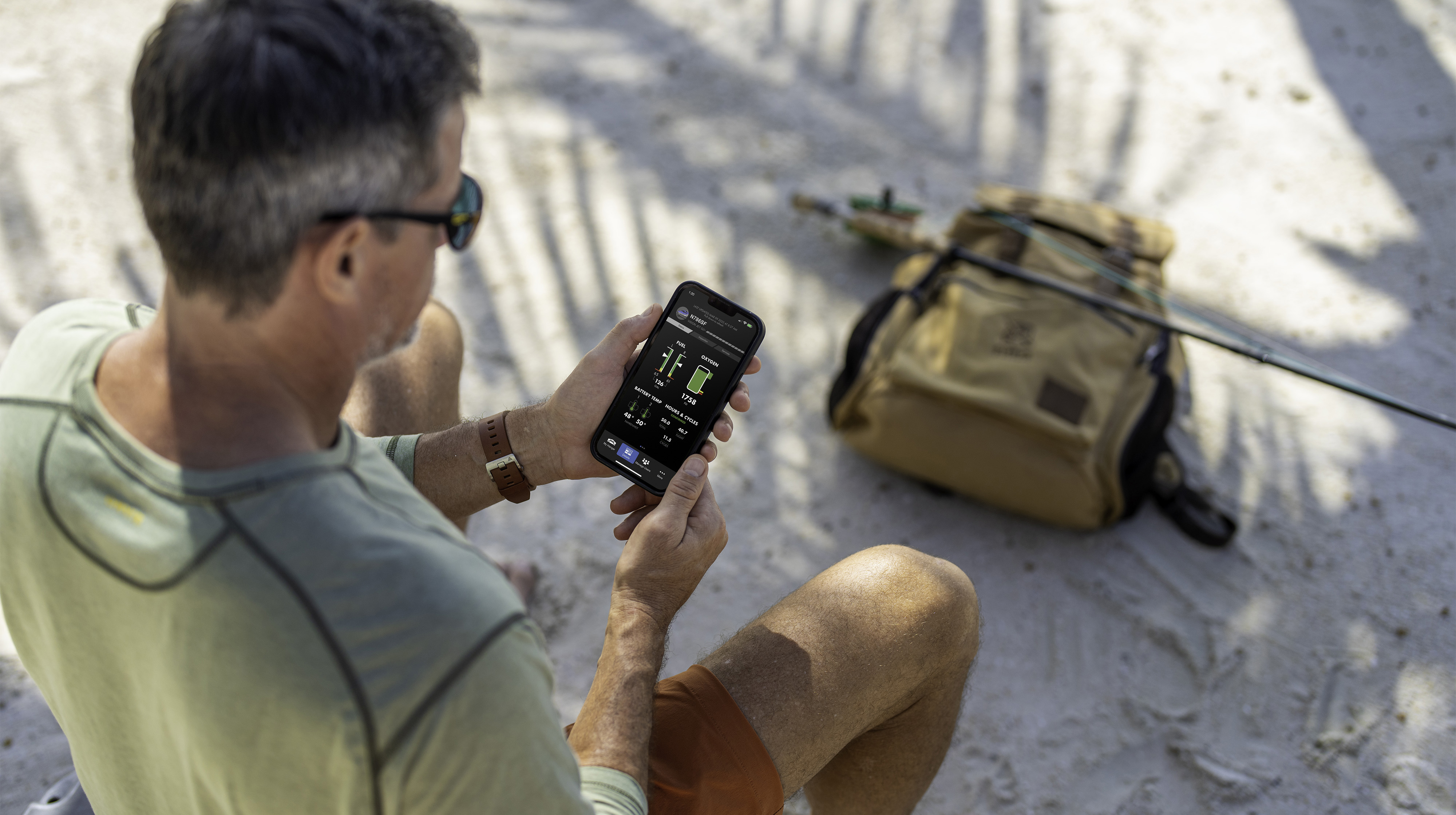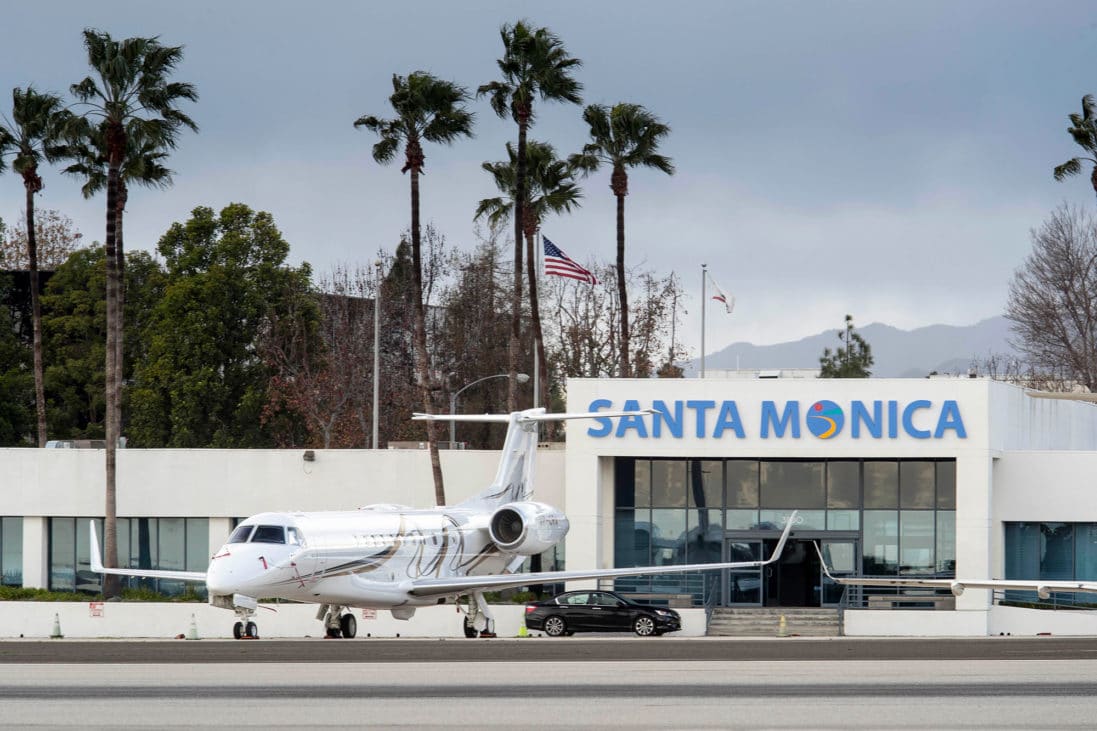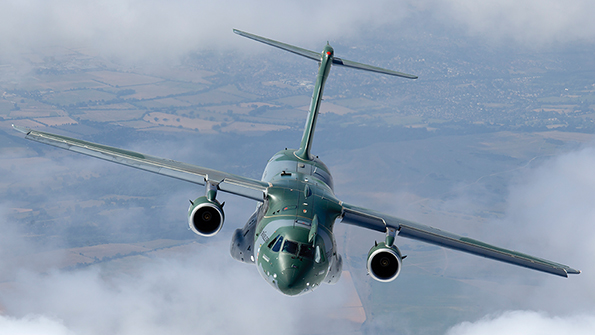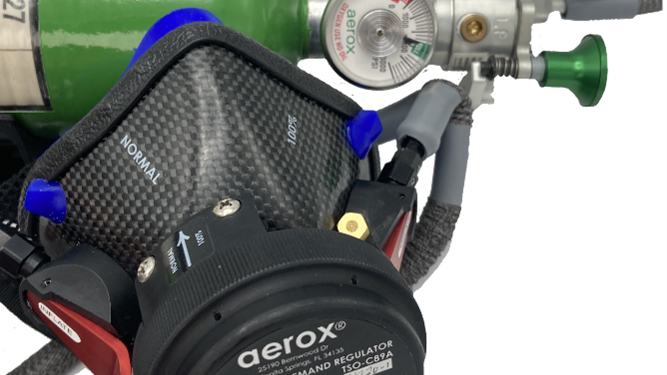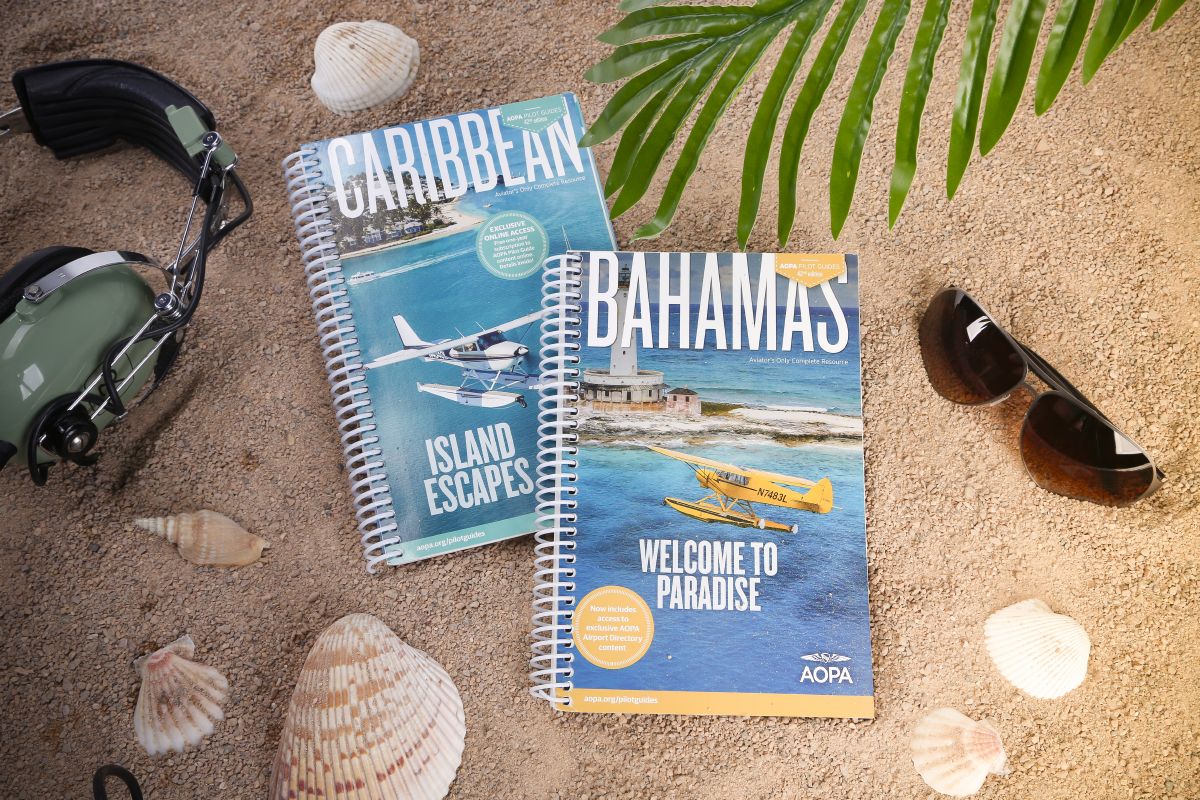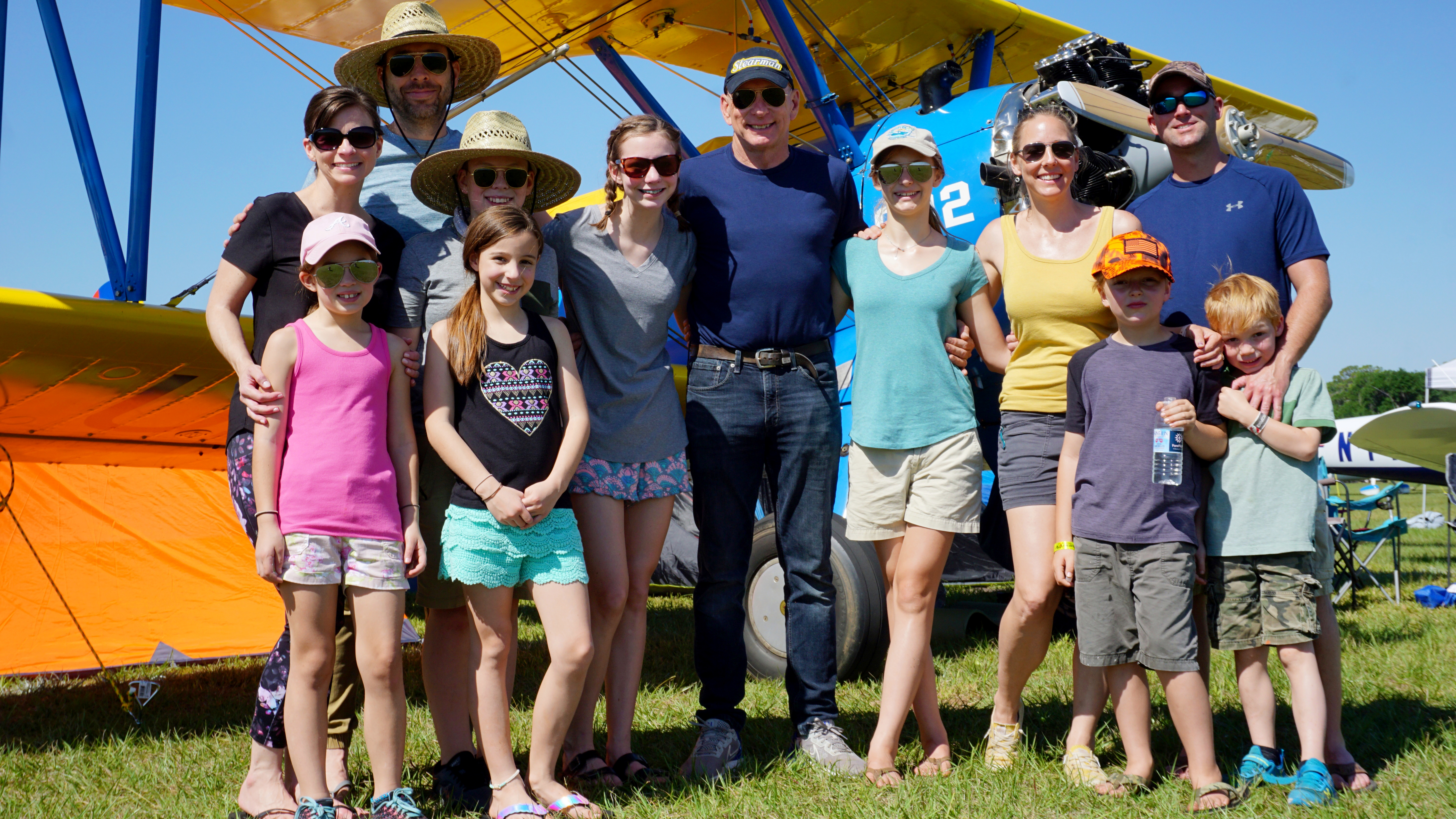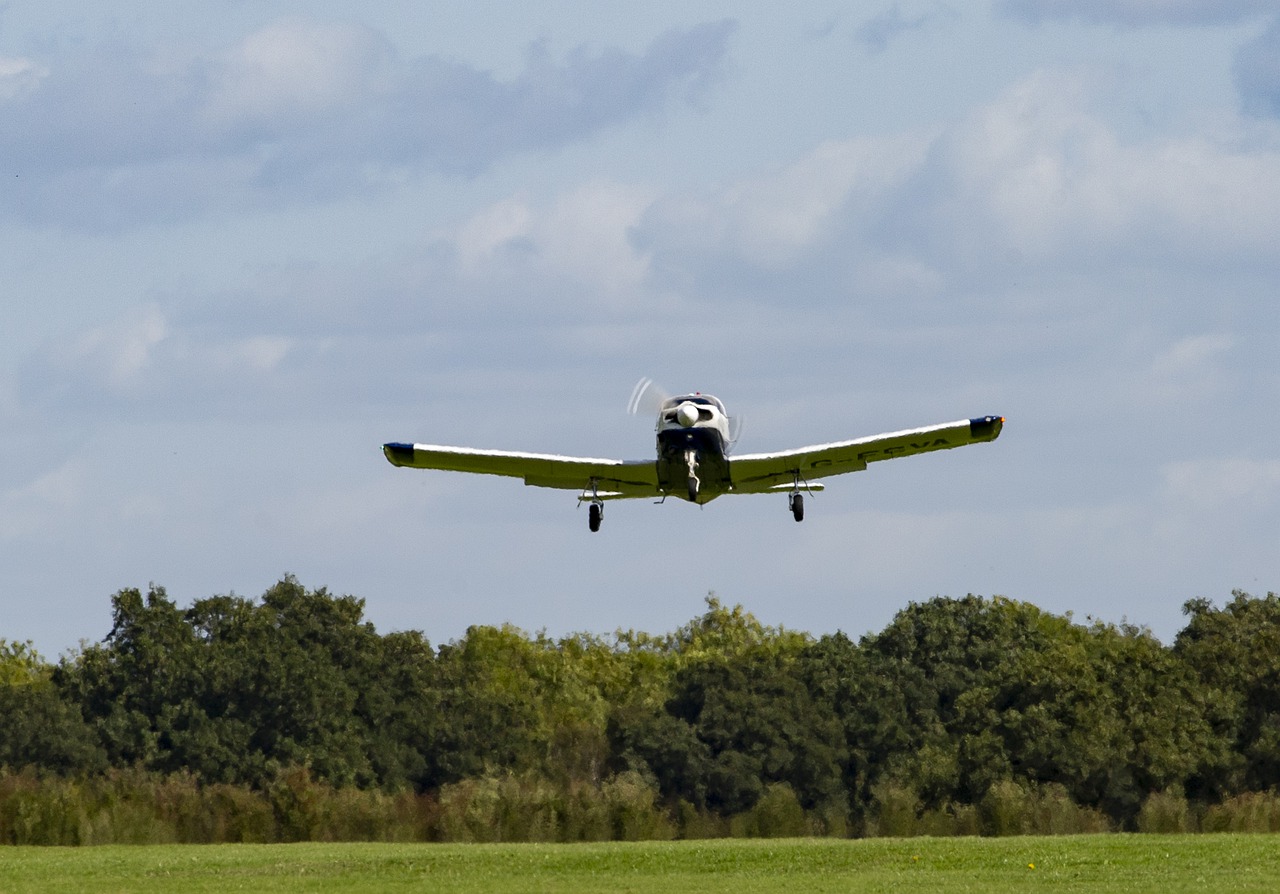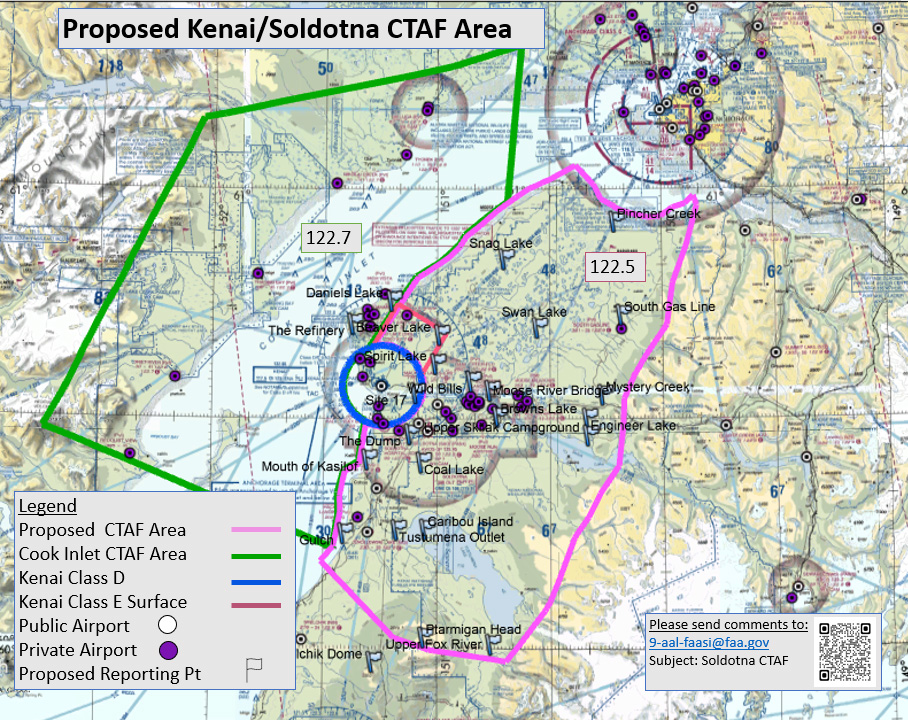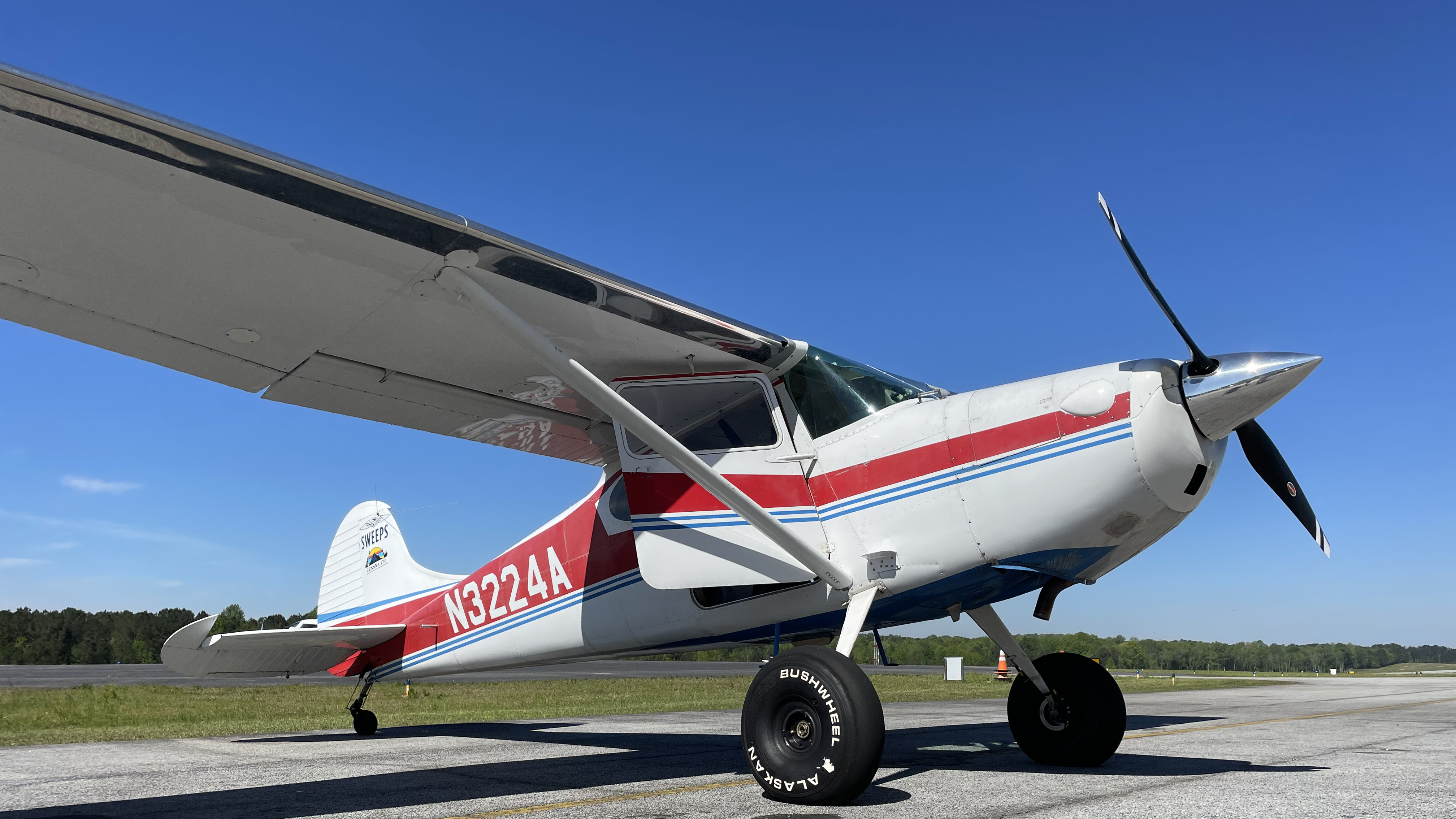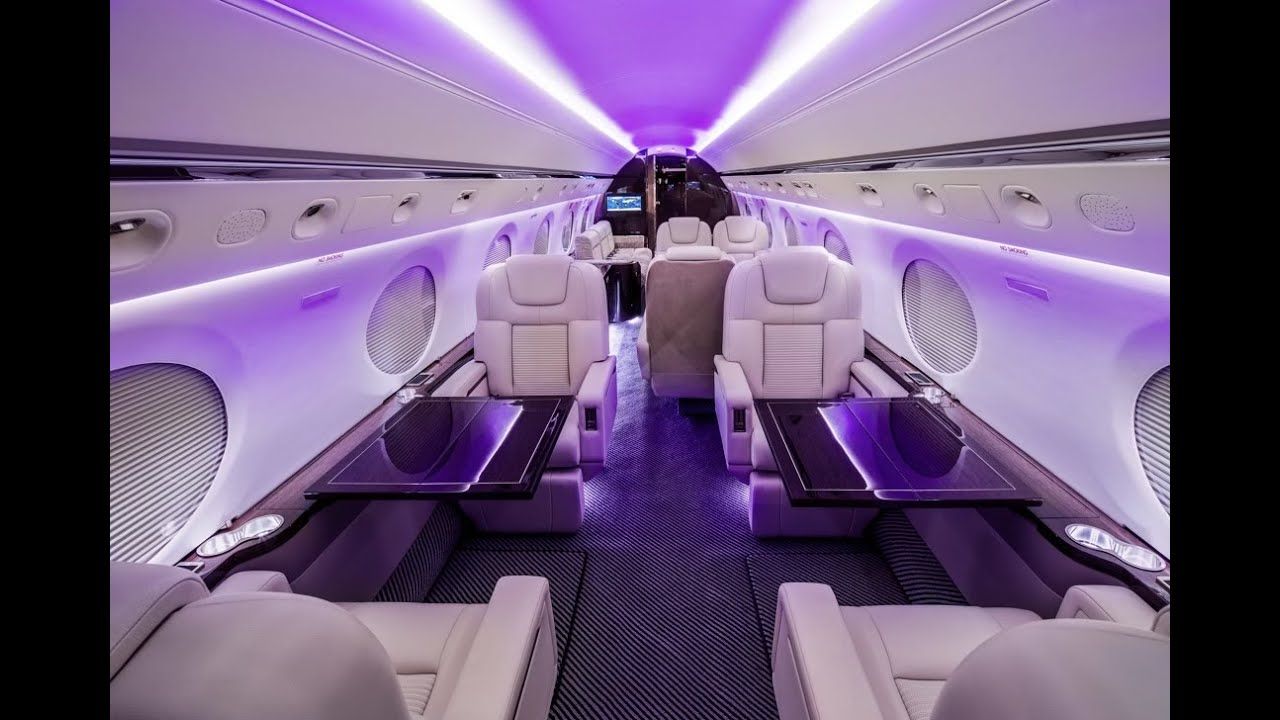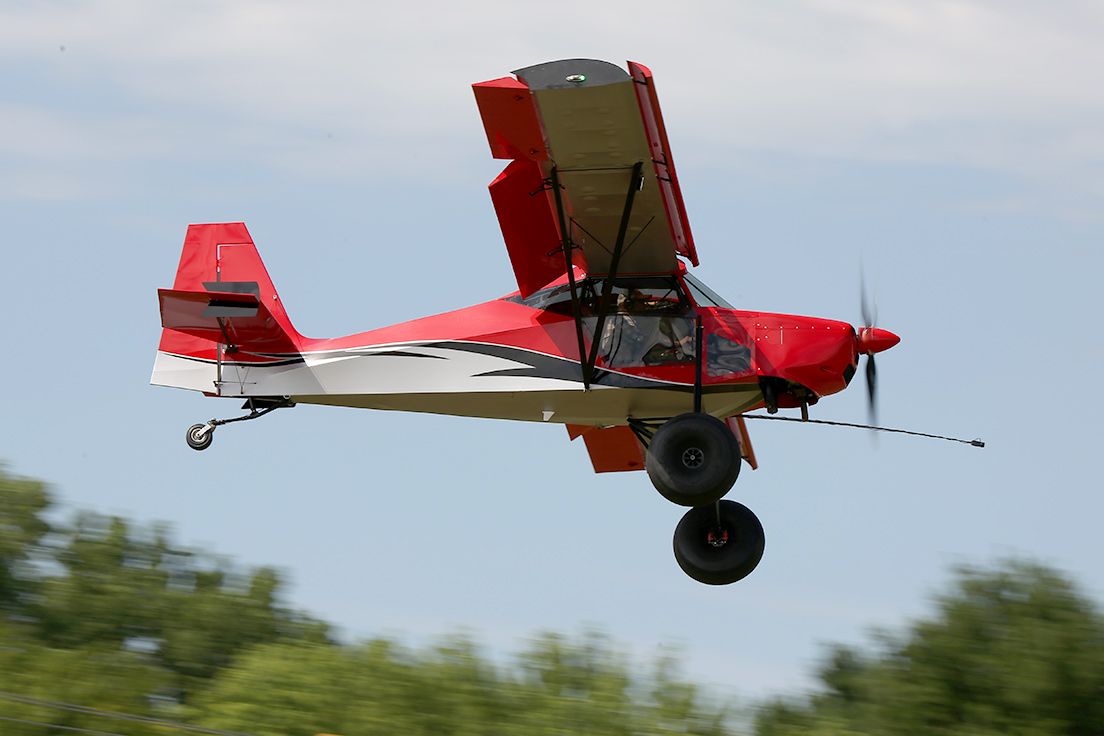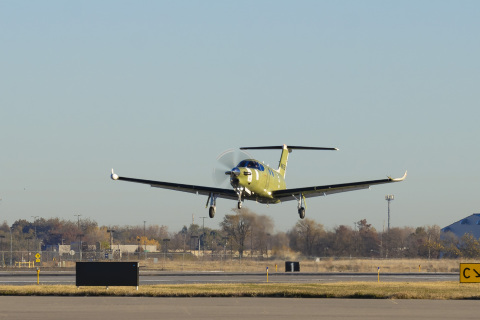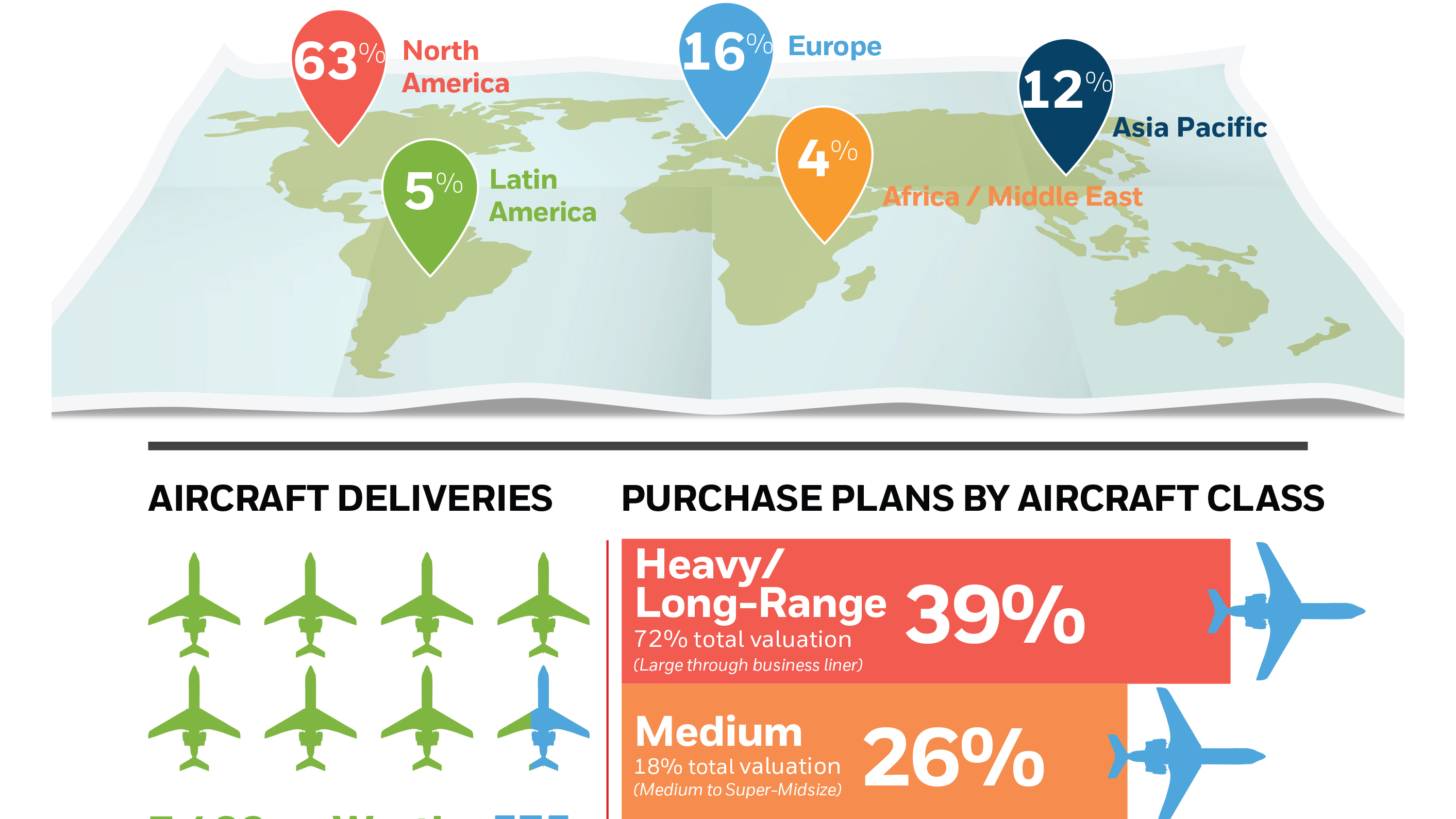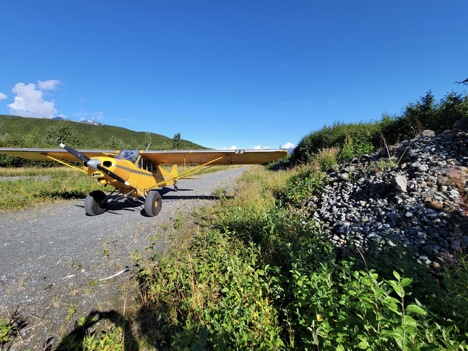Boeing C-17
Boeing C-17 user+1@localho… Mon, 11/08/2021 - 21:17 The Boeing C-17A Globemaster III is a heavy-lift military transport. The aircraft is powered by four Pratt & Whitney (PW) F117-100 engines that produce 40,400 pounds (lb.) of thrust each....
The Boeing C-17A Globemaster III is a heavy-lift military transport. The aircraft is powered by four Pratt & Whitney (PW) F117-100 engines that produce 40,400 pounds (lb.) of thrust each. The C-17 requires a minimum crew of three (pilot, co-pilot and loadmaster) but also has two optional observer positions in the cockpit. The C-17A’s namesake, Globemaster III, follows the Douglas C-74 Globemaster and Douglas C-124 Globemaster II. As of the time of this writing, a total of 275 aircraft are in service including 222 with the U.S. Air Force.
Program History
On November 10, 1972, Boeing and McDonnell Douglas were awarded development contracts to build two AMST prototypes, for $96.2 million and $86.1 million, respectively ($581 million and $520 million in 2019 dollars). McDonnell Douglas’ YC-15 prototype first flew on August 26, 1975, and was followed by Boeing’s YC-14 on August 9, 1976. Both designs experimented with different STOL techniques utilizing the Coandă Effect – additional details are in the features section. As the development of AMST continued, operational experience would influence AMST requirements. Operational Nickel Grass, the U.S. airlift campaign to resupply Israel during the Yom Kippur War of 1973, highlighted the limitations of Military Airlift Command’s (MAC) inventory of Lockheed C-5s and C-141 heavy transports. In 1976, the Air Force studied whether an AMST derivative could serve as a strategic transport. The Army lobbied the Air Force to commit to a larger AMST, as the C-5 could not make use of austere airfields and the C-130 could not accommodate MBTs and other heavy equipment. In March 1979 the USAF issued a program directive on the AMST transition program. The directive established the AMST as a strategic lift asset capable of outsized cargo that also would be able to fulfill tactical missions.
The Carter Administration ultimately canceled the program in December 1979 and established the C-X program as its de facto successor. The C-X would be capable of both intertheater and intratheater airlift, be able to operate from austere airfields and be able to carry outsized cargo. Exhaustive analyses of airfield data across potential contingency theaters led the USAF to require the C-X to be able to operate from runways 3,000 ft. or less with a maximum load of 130,000 lb. (to carry the new XM-1 tank, which became the M1 Abrams) – in contrast to the C-5B, which required runways greater than 5,000 ft. with a maximum load of 261,000 lb. These studies showed that central Europe had 446 airfields greater than 3,000 ft. long and 90 ft. wide but only 50 airfields were greater than 5,000 ft. long and 150 ft. wide (suitable for the C-5). The STOL technologies validated in the AMST program would prove vital to meeting this requirement. In April 1980, the USAF released the initial C-X Request for Proposal (RFP) to industry, with the final RFP following in October of that year. The USAF sought a C-X Initial Operational Capability (IOC) by 1987.
In January 1981, McDonnell Douglas, Lockheed and Boeing had submitted bids for C-X. Lockheed submitted a modified C-141 while McDonnell Douglas and Boeing submitted enlarged and refined derivatives of their AMST prototypes. Source selection was announced on August 28, 1981, with McDonnell Douglas emerging as the victor and their design being reclassified as the C-17. McDonnell’s design exceeded USAF requirements by more than 25%, in contrast with the other bids, which met the minimum specification. Despite the C-17’s source selection, Secretary of Defense Caspar Weinberger and his deputy, Frank Carlucci, opted to acquire the improved C-5B in January 1982 with the support of Congress. However, in July 1982, McDonnell Douglas was awarded $31.6 million ($83 million in 2019 dollars) to continue development work in order to maintain the option of later procuring the aircraft. By December 1985, engineering studies and political support for the program had progressed, resulting in a $3.387 billion ($7.937 in 2019 dollars) full-scale engineering development contract in December 1985. On September 15, 1991, the first C-17 (designated as T-1) took flight from Long Beach to Edwards Air Force Base.
Features
Airframe
The C-17’s design thoroughly reflects the C-X requirements for a heavy strategic airlifter with STOL capabilities. The C-17’s externally blown flaps (EBFs) direct a portion of the exhaust downward with the rest of the exhaust flowing through and over the downward flaps, thereby augmenting the aircraft’s lift. The C-17 has a maximum lift coefficient of 4.2. The Coandă Effect is a phenomena in which a stream of air or liquid attaches itself to a nearby surface, even if the surface curves away from the source of the fluid. The Coandă Effect can be used to increase lift and was pioneered by NASA Langley in the 1950s. The technology was demonstrated on the AMST prototypes in the 1970s. The C-17 features a prominent “T-tail” 65 ft. across that is positioned to avoid downwash from the lift system. The added lift helps pilots make steep landing approaches at low airspeeds – typically 127 to 138 mph (110 to 120 kt.) which is comparative to the Lockheed Martin C-130 medium transport.
The C-17’s airframe incorporates 16,000 lb. of composite materials (such as aluminum lithium alloy) used for major control surfaces and some structural components. The airframe has a design life of 30,000 flight hours or approximately 45 years. The C-17 had a mission capability rate of 82.57% in FY2018 compared to 62.77% for the C-5M and 76.68% for the C-130J over the same period.
Avionics
Radar
The C-17 was originally fitted with the Honeywell APS-133(V) weather radar which was replaced with the Honeywell APS-150 in Block 16 aircraft. The improved radar can detect weather phenomenon at a maximum range of 320 nautical miles (593 km) and has secondary ground mapping, beacon and skin paint radar modes.
Countermeasures & Survivability Equipment
Block 9 aircraft added the Airlift Defensive System around 2001, which includes the Northrop Grumman AAR-47 Missile Approach Warning System (MAWS). The AAR-47 is integrated with BAE Systems’ ALE-47 Countermeasures Dispenser System (CMDS). The C-17 has 12 dispensers mounted across the aircraft, with 20 expendables each. The C-17 uses Chemring MJU-51A/B flares, which are used to protect large aircraft from IR based threats.
As part of a stand-alone upgrade independent of the block configurations, C-17s received the Northrop Grumman AAQ-24(V) Large Aircraft Infrared Countermeasures (LAIRCM) system. LAIRCM components include the ultraviolet AAR-54 MAWS, countermeasures processor and Small Laster Transmitter Assembly (SLTA) infrared laser jammer. The SLTA was subsequently replaced with the smaller and lighter Guardian Laser Transmitter Assembly (GLTA) in LAIRCM Block 30. A total of 6 AAR-54 sensors are mounted to provide full coverage of the C-17 and one or three SLTA or GLTAs can be mounted depending upon the configuration. In a full LAIRCM configuration, one SLTA or GLTA is mounted on the tail facing rearward and the remaining two assemblies are mounted on opposite sides of the forward fuselage. The AAR-54 is integrated with the ALE-47 CMDS.
As of the time of this writing, the C-17 does not feature a form of radio frequency (RF) electronic countermeasures such as a radar warning receiver (RWR) or defensive RF jammer. The Air National Guard has expressed interest in fitting all of its C-17s with RWRs.
Engines
The P&W F117-100 is a militarized version of the PW2040 engine used on the Boeing 757. Modifications include a titanium fan case, second hydraulic pump and composite fan exit guide vanes. The C-17’s combination of EBFs and thrust reversers, which direct airflow upwards and forwards, allows the most efficient use of a confined airfield. Six C-17s can operate in the space required to accommodate two C-141s or a single C-5.
Payload & Performance
C-17A has an operating empty weight of 282,500 lb., maximum take-off weight (MTOW) of 585,000 lb. and carries up to 181,054 lb. of fuel. An extended-range fuel tank can be mounted internally, which raises the C-17’s fuel to 240,00 lb. and ferry range to 6,500 nautical miles. The C-17A can carry a maximum of 170,900 lb. of cargo while cruising at Mach 0.74 (518 mph.) at an altitude of 28,000 ft. for 2,400 nautical miles. The C-17’s cargo compartment is 88.17 ft. long, 18 ft. wide and between 12.4 and 13.5 ft. tall (compartment height increases aft of fuselage Station 937). for a total volume of 20,900 cubic feet. Note: the effective cargo volume is less, as Air Mobility Command (AMC) policy ensures six inches of clearance on the top and sides of a cargo relative to the compartment.
Payloads can include the following options:
- 1 M-1 MBT
- 2 M270 MLRS
- 2 M2/M3 Bradley Infantry Fighting Vehicles
- 2 UH-60 Blackhawks
- 3 AH-64 Apaches
- 3 Stryker Armored Personnel Carriers
- 10 HMMWVs
- 18 x 463L pallets
- 102 Paratroopers + 8 equipment bundles
- 188 passengers
- Patriot Minimum Engagement Package – 7 C-17s to transport full package, which includes 1 radar station, 2 launchers with 4 missile canisters each, 1 Electrical Power Plant, 1 tanker, 1 Small Repair Parts Transporter, 1 Guided Missile Transporter, 1 Engagement Control Station, 5 HMMWVs and associated trailers, 2 x 463L Pallets with 4 missile canisters each, 12 x 463 L of pallets of other associated equipment and 65 passengers
The C-17 can take-off from runways 3,000 ft. long and 90 ft. wide with a 160,000 lb. payload but requires a 7,740 ft. airfield when operating at its MTOW configuration. With a payload of 167,000 lb., a C-17 can land on a runway just 2,700 ft. long and 90 ft. wide. These figures are contingent upon ambient air temperature, aircraft weight and runway composition, e.g. prepared runways made of crushed limestone vs. semi-prepared runways made from graded gravel. The C-17 is also capable of performing a three-point star turn in 73.5 feet and backing up a 3 percent grade.
C-17A
Definitive serial production configuration as described above. Block upgrades described in the upgrades section.
Proposed C-17 Configurations
C-17B
The C-17 Fuel Efficient (FE) configuration would narrow the C-17’s fuselage by four feet to reduce drag. Greater incorporation of composite materials would have reduced airframe weight. Boeing estimated that these changes would result in a 15% reduction in fuel consumption. The aircraft’s engines would be upgraded to provide 13% additional thrust. However, the narrowed airframe would have limited the aircraft’s cargo pallet capacity and ability to carry outsized cargo.
KC-17
In the 1990s, McDonnell Douglas explored a tanker configuration of the C-17. The KC-17 configuration would have included both a boom and hose-and-drogue refueling capability. Boom operation would be made possible through the installation of a remote viewing system.
MD-17/BC-17X
The MD-17 was a proposed commercial derivative of the C-17 marketed in the 1990s. MD-17 would have shared significant commonality with the C-17 except for the removal of select military equipment like inflight refueling capability. When McDonnell Douglas was acquired by Boeing in 1997, the concept was renamed to the BC-17. No orders for MD-17/BC-17 aircraft materialized.
Upgrades
Since 1994, the USAF has sought to continuously update its C-17s with the latest performance and reliability improvements through new block configurations. Boeing typically installed these upgrades when aircraft entered preprogramed depot maintenance. Through the Globemaster III Integrated Sustainment Program (GISP), Boeing ensures only two block configurations concurrently exist within the global fleet of C-17s – to ensure maximum commonality and supportability. The USAF modified all of its C-17s to the Block 21 configuration as of January 2020.
Block Upgrades
- Block 1-5: P&W improvement 94 package engine enhancements (0.5% additional thrust and reduced sustainment costs), redesigned APU exhaust
- Block 6 & 7: modified external seals for performance improvements
- Block 8: landing gear redesign
- Block 9: significant avionics upgrade including the provision of AAR-47 MAWS and flat panel cockpit displays. Other features include improved nacelles for weight and cost (Nacelle/Engine Affordability Team) and structural fixes
- Block 9+: incorporates features from Block 10
- Block 10: horizontal tail redesign to use more composite materials for reduced weight
- Block 11: power wiring modifications, automatic depressurization upon landing, provision of aircrew data transfer device (laptop), dual row airdrop capability and loadmaster oxygen regulator
- Block 12: extended-range fuel containment system, global air traffic management functions and extensive software modifications; “Block 12-” and “Block 12+” denote different software configurations
- Block 13: terrain awareness warning system (TAWS)
- Block 14-15: retrofit of Mobility 2000 (M2K) C2 modernization program and Secure Enroute Communications Package – Improved (SECOP-I) and Communications Open System Architecture (COSA)
- Block 16: replaced the APS-133(V) with the APS-150 weather radar as well as color palettes, improved displays. Work involved the removal of 3,000 wires and installation of 7,000 new wires (power, video and data cables)
- Block 17: Formation Flight System, replaced the legacy Station Keeping Equipment (SKE) system – used in formation flying such as the strategic brigade airdrop mission, LOX bottle ground fire impact protection and infrared combat lighting modification. The new lights reduce visibility to adversary forces on approach at night
- Block 18: Replacement Core Integrated Processor, Improved throughput and increased memory to enable future capabilities beyond Block 17
- Block 19: Identification, Friend or Foe (IFF) Mode 5, DoD-mandated update to the existing DoD Mode 4 capability
- Block 20: software-only modification fielded in conjunction with Block 21. Configuration includes Required Navigation Performance (RNP) updates, provides capability to correctly display/fly majority of published worldwide arrival and departure procedures
- Block 21: Automatic Dependent Surveillance – Broadcast Out (ADS-B Out), civil airspace mandate both FAA and European, maintains access to preferred airspace (all operational USAF C-17s will be ADS-B Out compliant by the mandate)
LAIRCM
As described in avionics, countermeasures and survivability equipment.
Replacement Heads Up Display
The Replacement Heads Up Display (RHUD) replaces the legacy HUD. The USAF plans to spend a total of $285 million on the RHUD program with $33.6 million requested as part of its FY22 budget.
Armor
Kevlar and ceramic armor plates can be installed to protect crew stations.
Extended Range Fuel Tanks
C-17s can be configured with a 6,000-gallon internal fuel tank which runs across the aircraft’s center dry bay area (between the two internal wing fuel tanks, running across the top of the cargo bay). The configuration also adds the On Board Inert Gas Generation II System (OBIGGS) to mitigate the risk of those fuel tanks exploding or catching fire in the event of damage.
Production & Delivery History
A total of 279 C-17As were produced between 1991 and 2015. A static test airframe (S-1), static test article (D-1) and test aircraft (T-1) were also produced. McDonnell Douglas, later Boeing after 1997, produced all aircraft from its Long Beach production line in California. Boeing built the last 10 C-17As at its own expense in anticipation of future international orders. These aircraft are occasionally referred to as “white tail” aircraft and were purchased by Australia, Canada, the UAE, Qatar and India.
On Oct. 1, 2003, the Air Force awarded Boeing a $5 billion ($6.78 billion in 2019 dollars) Globemaster III Sustainment Program (GSP) Performance Based Logistics (PBL) contract for depot repair services. All U.S. and FMS C-17s were maintained via the GSP & later the Globemaster III Integrated Sustainment Program (GISP). On Oct. 1, 2011, Boeing was awarded $2 billion ($2.27 billion in 2019 dollars) for GISP and subsequently received extensions and Undefinitized Contract Actions (UCAs). In August 2017, the DoD Inspector General reported the Air Force planned to spend $19 billion on GISP through FY2021.
In September 2021, the DoD and Boeing have agreed on a $23.8 billion framework to cover C-17 sustainment over the next decade. The phased PBL includes options to be exercised over the duration of the framework. The program is currently funded through September 2024 with Phase I worth $3.5 billion.
United States
In 1985, the USAF debated between programs of record (PORs) of 150 and 210 aircraft with a projected procurement cost of $25.8 billion and $33.8 billion ($69.86 and $91.52 billion in 2019 dollars, respectively). The service ultimately opted for a POR of 210, but Defense Secretary Dick Cheney lowered the POR to 120 in April 1990. In May 1993, the DoD notified McDonnell Douglas that it would terminate C-17 production at 40 aircraft if ongoing problems weren’t addressed within two years. That year, the DoD modified key C-17 performance objectives to reduce developmental burdens such as lowering payload capacity from 172,200 lb. to 169,000 lb., lowering cruise speed from Mach 0.77 to Mach 0.74, and reducing ferry range from 4,600 nm to 4,300 nm. McDonnell Douglas incurred $1.5 billion in cost overruns during the C-17’s development. Developmental Test & Evaluation (DOT&E) ran from September 1991 to December 1994. Initial Operational Test & Evaluation (IOT&E) followed and concluded in June 1995.
In May 1996, Boeing received a $16.2 billion ($26.56 billion in 2019 dollars) multi-year procurement (MYP) contract for 80 C-17As across FY1997-FY2003. The USAF expanded its POR to 180 aircraft in 2002 and Boeing subsequently received a contract for 60 C-17As worth $9.7 billion ($13.78 billion in 2019 dollars) in August 2002. The new contract would extend production until FY2007, by which time total program costs had reached $59.4 billion ($73.35 billion in 2019 dollars). Congress added a total of 43 aircraft between FY2007 and FY2010 (10 in FY2007, 15 in FY2008, 8 in FY2009, 10 in FY2010). In July 2010, aircraft 00-0173 crashed in Alaska and was destroyed, with all crew killed. In June 2012, Boeing received a $169.8 million ($190 in 2019 dollars) contract for a single attrition replacement aircraft. The final 223rd production USAF aircraft was delivered in September 2013.
Australia
As part of the AIR 8000 Phase 3 program, the Royal Australian Air Force (RAAF) approved the purchase of four C-17s in March 2006. The RAAF accepted its first C-17A Block 17 aircraft on Nov. 28, 2006. AIR 8000 Phase 4 acquired a fifth C-17A, as announced in April 2011. The acquisition of a sixth aircraft was announced in March 2012. In April 2015, the government announced its intent to purchase a pair of white tail C-17s at a cost of A$1 billion ($717 million in 2019 dollars) – the figure included A$300 million ($215 million in 2019 dollars) in facilities improvements. The final C-17A arrived in Australia in November 2015.
Canada
In November 2005, Canada announced its intent to acquire four C-17s. In September 2006, the (Defense Security Cooperation Agency (DSCA) issued a notification regarding the potential sale of four C-17s as well as associated equipment and support services worth $1.3 billion ($1.65 billion in 2019 dollars). In February 2007, Boeing was awarded a C$4 billion ($3.5 billion in 2019 dollars) contract for production, spares and maintenance services. Canada received USAF C-17 production allotment, which allowed the first aircraft to be delivered in August of that year. The aircraft is locally designated as the CC-177. In December 2014, Defence Minister Rob Nicholson announced the RCAF would acquire a fifth C-17, which was delivered in March 2015.
India
The Indian Air Force (IAF) required a heavy transport to replace its Ilyushin IL-76 airlifters to transport and resupply its forces along the mountainous Himalayan border. In April 2010, DSCA issued a notification regarding the potential sale of 10 C-17s as well as associated equipment for $5.8 billion ($6.85 billion in 2019 dollars). In 2011, India ordered 10 C-17s for Rs 22,000 crore, or $5.2 billion in inflation adjusted 2019 dollars. Boeing delivered five aircraft in 2013 and five in 2014. The IAF desired an additional six aircraft but these never materialized. In 2015, the service approved the purchase of three aircraft, but the production line had already closed and one white tail C-17 remained. The Defence Acquisition Council approved the purchase in July 2018 and the 11th aircraft was delivered in August 2019.
Kuwait
In September 2010, DSCA issued a notification regarding the potential sale of a single C-17A aircraft and support services worth $693 million ($815 million in 2019 dollars). A second notification was issued in April 2013 for an additional aircraft and associated equipment and support for $371 million ($410 million in 2019 dollars). The first aircraft was delivered in February 2014.
North Atlantic Treaty Organization
Through the NATO Airlift Management Agency (NAMA), three C-17s were acquired for the Strategic Airlift Capability initiative (SAC). A total of 3,165 annual flight hours are allotted to a dozen nations (including Finland and Sweden, which are members of the NATO Partnership for Peace program):
- U.S. 32%
- Sweden 17.4%
- Romania 6%
- Poland 4.7%
- Norway 12.6%
- Netherlands 15.8%
- Lithuania 1.4%
- Hungary 1.6%
- Finland 3.2%
- Estonia 1.4%
- Bulgaria 2.1%
All three aircraft are based HDF Pápa Air Base in Hungary. SAC aircraft have been used to support operations in Afghanistan and Mali as well as humanitarian missions in Haiti, Pakistan and St. Maarten. As of June 2019, SAC aircraft had flown 2,500 missions totaling 27,000 flight hours.
United Arab Emirates
In January 2010, Boeing announced it had concluded negotiations with the UAE for the acquisition of 6 C-17s. Boeing delivered four C-17s in 2011 and two in 2012. The country decided to acquire an additional pair of aircraft in February 2015 from among the remaining white tail airframes.
United Kingdom
In 2001, the UK became the first international customer for the C-17 with a seven-year lease agreement for four aircraft. The Royal Air Force (RAF) required a short-term airlift capability to mitigate ongoing delays to the Airbus A400M airlifter program. In 2008, the UK decided to purchase the leased aircraft as well as buy another pair of C-17s. In 2009, the UK ordered a 7th aircraft, which was followed by an 8th in 2012.
In September 2020, the DSCA issued a notification regarding the potential sale of $401.3 million worth of contractor logistical support services to support the UK C-17 fleet. The following year, the UK announced it would spend £324 million ($443 million) on C-17 upgrades such as SATCOM, heads up display, software and various hardware changes in keeping with U.S. Air Force configuration standards. The RAF expects the C-17 to serve past 2030 per the country’s Defence Command Paper.
Qatar
In July 2008, Qatar and Boeing signed a contract for two C-17s as well as associated equipment and options for another pair of aircraft. Qatar received its first pair of C-17s in 2009, followed by another pair in 2012. In June 2015, Qatar and Boeing concluded a contract for four additional C-17s from the white tail production aircraft which were delivered the following year.




 admin
admin 











